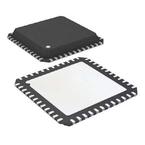下载

AN-0987
APPLICATION NOTE
One Technology Way • P. O. Box 9106 • Norwood, MA 02062-9106, U.S.A. • Te l: 781.329.4700 • Fax: 781.461.3113 • www.analog.com
Designing a Wireless Transceiver System to Meet the Wireless M-Bus Standard
by Austin Harney
INTRODUCTION
The continuing rollout of advanced metering infrastructure (AMI)
systems has lead to greater efficiency for utility companies
collecting energy, gas, and water consumption data. Replacing
manual readings with automated metering systems can reduce
labor costs as a first-order benefit. More importantly, automated
systems allow higher-order benefits and services that the utility
company can conveniently provide, such as real-time price
signalling to promote better energy efficiency, and instant
reporting of fault detection, as well as much more accurate data
for profiling usage within the network.
Various choices of technology are available when implementing a
networked metering system from satellite technology to simple
infrared emitters. However, two technologies are emerging as
dominant: wireless short range devices (SRD) and power line
carrier (PLC) systems. For water and gas meters in particular,
SRD technology is becoming the domi-nant technology choice
due to the unsuitability of power line carrier systems in these
environments.
To achieve the best combination of communication range and
low power consumption, the majority of meter manufacturers
have chosen radios in the lower UHF or sub-GHz bands as the
RF communication link from meter-to-meter and meter-to-
data collectors. For example, a frequency of 868 MHz is often
used in Europe while a frequency range of 902 MHz to 928 MHz
is often used in North America.
Radios at these frequencies offer a better communication range
for a given power budget than competing 2.4 GHz technologies
and thus allow a much wider cell coverage for a given base
station or data collector. The range benefit is also vital for gas
and water meters where the meter location could be in a base-
ment or in an underground pit. However, one of the drawbacks
of using this frequency band, from the perspective of the utility,
is the lack of available standards in these bands.
The sub-GHz bands are clearly the best technology choice
for battery-powered gas and water meters and, thus, there is
increasing demand for standardization to allow interopera-
bility between different manufacturer’s systems. Wireless
M-Bus, which evolved from the wired M-Bus user group, is
increasingly preferred in Europe as the standard for communi-
cation between meters. M-Bus is now part of the European
normative (EN) standard detailed in EN 13757. The wireless
M-Bus protocol is detailed in the EN 13757-4 variant. Because
this standard is relatively new, there are not many existing
solutions on the market. This causes problems among some
manufacturers who are increasingly being asked by utility
vendors to offer M-Bus-compatible products.
This application note discusses the EN 13757-4 standard and
the system requirements when using the Analog Devices, Inc.,
ADF7020 to design an M-Bus-compatible device.
Rev. 0 | Page 1 of 8








